We have treated almost 100,000 patients on our mission to save one million lives.
100,000 patients treated on our mission to save one million lives.
The Devastating Effects of Heroin Abuse

Annual deaths involving heroin represent more than four deaths for every 100,000 Americans.
Heroin is a highly addictive and dangerous drug that dramatically harms a person’s physical, mental, and emotional health. The abuse of this drug is associated with severe health risks and social problems.

Contact Recovery Centers of America Today
If you are struggling with heroin, it is essential to seek medical help and support immediately. Recovery Centers of America’s team of medical and mental health professionals is here to provide comprehensive addiction care to help you overcome substance use disorder and achieve long-term recovery.
- Contact 1-800-RECOVERY to speak with a treatment advisor 24/7/365
- No cost intervention services available exclusively through RCA
- Verify your insurance benefits here
- One of our transportation specialists will pick you up wherever you are in 2 hours or less
Don’t wait another day to get the help you need. Contact the RCA team today to begin the journey towards a healthy, fulfilling life. We are committed to supporting you every step of the way, providing personalized treatment options and evidence-based therapies to help you achieve your goals.
Together, we can overcome your heroin addiction and build a brighter future.
Contact Recovery Centers of America now and take the first step towards long-lasting recovery.
An Evidence-Based Continuum
Our Unique System of Care, Guided by The RCA Care Model
The Core Tenets of Our Care Model
There are six core tenets that we’ve determined to be essential for every patient to achieve sustained recovery.
Medications for Addiction Treatment
Medication to help reduce cravings, maintain long-term recovery, and decrease the likelihood of relapse.
12-Step Recovery Support
The 12 steps and other recovery support programs are integrated throughout the process, with meetings held daily.
Dialectical Behavior Therapy (DBT) Skills
Evidence-based skills training and coaching to help manage emotions, cope with crisis, and improve relationships.
Family Involvement
Family support services including engagement, education, support groups, and other resources.
Alumni
The Alumni program helps ease the transition back into daily life and provides long-term sober supports.
Measurement-Driven Care
Industry leading measurement methods track patients’ success and incorporate data into treatment feedback.
Our caring and experienced staff are dedicated to providing personalized care to each person struggling with addiction to promote a healthy and sustainable recovery.
Don’t let drugs or alcohol control your life – contact Recovery Centers of America today to get the help you or your loved one needs to start on the path to recovery.

How Heroin Negatively Impacts Your Life

Physical

Psychological

Financial

Social
Heroin Related Deaths
According to the Centers for Disease Control and Prevention (CDC), deaths involving heroin have increased by over five times since 2010, with a record 14,019 deaths in 2019 alone.
14,000 Americans die annually from overdosing on heroin
The number of heroin-involved overdose deaths was nearly seven times higher in 2020 than in 1999
Nearly 20% of all opioid deaths involve heroin
What is the chemistry of heroin?
Heroin is an opioid drug made from morphine, a natural substance taken from the seed pod of the Asian opium poppy plant. Heroin can be a white or brown powder, or a black sticky substance known as black tar heroin.
Heroin is technically considered an opioid not an opiate, since it is chemically manufactured, although molecules from the opium plant are used in the process. Some of heroin’s active ingredient molecules are not found in nature.
Heroin enters the brain rapidly and changes back into morphine. It binds to opioid receptors on cells located in many areas of the brain, especially those involved in feelings of pain and pleasure. Opioid receptors are also located in the brain stem, which controls important processes, such as blood pressure, arousal, and breathing.
Heroin is manufactured from opium poppies cultivated in four primary source areas: South America, Southeast and Southwest Asia, and Mexico. Afghanistan now produces the majority of the world’s heroin, but little or none of the Afghanistan heroin reaches the US. Although 10 years ago, the US got 90% of its heroin from Columbia, today we get 90% of our heroin from Mexico (up from 10% in 2003).
Heroin’s long history
Heroin actually has a very interesting history. Heroin (as well as morphine, and other opiates) trace their origins to a single plant—the opium poppy plant. The earliest reference to opium use and cultivation of opium poppies comes from Mesopotamia around 3400 B.C. Narcotic drugs have been used both recreationally and as a medicine for centuries. Opium-based medicines, including morphine, have been widely used as pain relievers. Heroin, too, was first synthesized for medical use before physicians realized its overwhelming addictive properties.
Opium grew in popularity when it was introduced to China and other parts of Asia, likely in the 6th or 7th century A.D. through trade along the Silk Road, which connected the Mediterranean cultures of Europe to central Asia, India, and China.
There were actually two “opium wars,” – the first was in the 1700s when the British empire conquered a major poppy-growing region in India and began to smuggle opium from India into China. The second was when the British and French fought against China to make opium trade legal in China (between 1856-1860).
When thousands of Chinese came to America to work on our railroad system and in the California gold fields during Gold Rush, they hey brought with them the habit of opium smoking. Chinese immigrants soon established opium dens throughout the West. By the 1870s, opium smoking had become a popular habit for many Americans.
A German scientist, Friedrich Sertürner, first isolated morphine from opium in 1803. Morphine, a very powerful painkiller, is the active narcotic ingredient in opium. In its pure form, morphine is ten times stronger than opium. Morphine is still the precursor to all other opioids, including heroin and prescription narcotic painkillers such as codeine, fentanyl, methadone, hydrocodone/Vicodin, hydromorphone/Dilaudid, and oxycodone/OxyContin.
By the second half of the 19th century, scientists were looking for a less addictive form of morphine, and in 1874, Alder Wright, first refined heroin from a morphine base. The drug was intended to be a safer replacement for morphine!
By the 1890s, Bayer, located out of Germany, marketed heroin as a morphine substitute and as a cough suppressant for children suffering from coughs and colds. As a result, by the early 1900s, heroin addiction in the United States and western Europe had skyrocketed.
The Harrison Narcotics Tax Act of 1914—the first major piece of U.S. legislation to control the sale and use of opiates—was passed. The act passed restrictions on the distribution and sale of heroin and opium, as well as cocaine. Ten years later, Congress made it illegal to make, import or sell heroin when it passed the Anti-Heroin Act of 1924. In 1971, the Nixon Administration launched the famous “War on Drugs.”
Much has changed since then! In the mid-twentieth century, heroin became the poster child of hard-core drug addiction, blamed for ruining innumerable lives, especially among the economically disadvantaged and Vietnam veterans.
Heroin use decreased somewhat in the late twentieth century but surged again in the early twenty-first after unscrupulous marketing tactics by pharmaceutical companies greatly increased the number of people addicted to prescription opioids thereby increasing the number who turned to heroin when that cost became too high.
Can heroin be prescribed in the US?
Heroin is a schedule I drug secondary to the Controlled Substances Act (CSA) – the statute establishing federal U.S. drug policy under which the manufacture, importation, possession, use and distribution of certain substances is regulated. The CSA was passed in 1970. The Act created five Schedules (classifications), with varying qualifications for a substance to be included in each.
A substance meets criteria for Schedule I classification if:
The drug/substance has a high potential for abuse.
The drug/substance has no currently accepted medical use in treatment in the United States.
There is a lack of accepted safety for use of the drug or other substance under medical supervision.
That said, as already noted, heroin was initially considered a potential cure for morphine addiction, before its high propensity for addiction was recognized. Early heroin marketing also recommended it as treatment for tuberculosis and other diseases with coughing symptoms.
How is heroin used?
In the past 50 years, Heroin has predominantly been g snorted, smoked, and injected, usually in that order. As use progresses as well as the need for more of the drug to stave off withdrawal increases, users used to progress from the less aggressive routes to the higher intensity routes of administration (snorting to IV injection). It was rare to see someone who either who moved from initial use of snorting to IV injections quickly and even more rare to see a patient that started using Heroin by injection. Today, due to the level of dependency on opioids caused by prescription drugs and the new social norms that are more accepting of injection use, it is not uncommon for users to mover directly from prescription opioid abuse and dependence, to injecting heroin.
Seventy-five percent of people addicted to heroin say they were introduced to opioids through prescription drugs, and 94% of people in treatment for opioid addiction say they turned to heroin because prescription drugs were more expensive. It’s currently estimated that 600 people in the US try heroin for the first time every day.
What are the signs of heroin use?
Signs of Heroin use and addiction include: itchy skin and constant scratching, chronic drowsiness or grogginess, dry mouth, impaired judgment, lowered body temperature, slowed breathing and heart rate, constricted pupils, vomiting, evidence of drug paraphernalia such as burnt spoons, syringes, injection kits, sleep difficulties, malnutrition, long sleeves worn in warm weather (to hide needle marks), withdrawal from others, loss of motivation or diminished plans for the future, spending money for undisclosed purposes, “losing” one’s own or a friend’s property, needing increasing amounts of the drug to feel the same effect, inability to cut down, and continued use despite negative consequences.
Symptoms of withdrawal include: runny nose, painful muscle spasms, severe abdominal cramps, body tremors, pounding heart, rapid breathing, heavy perspiration, chills, anxiety, irritability, severe nausea and vomiting, diarrhea, and extreme fatigue.
Symptoms of overdose include: shallow or labored breathing, weak pulse, pinpoint pupils, bluish tinge to lips and fingers, delirium, and unconsciousness. Call for emergency medical help immediately; a heroin overdose is potentially life-threatening. After the immediate danger is dealt with, do everything possible to persuade the patient to continue to heroin and treatment. He/she is at high risk of overdosing again.
